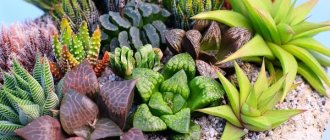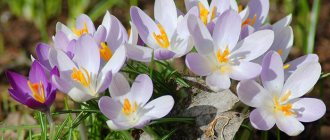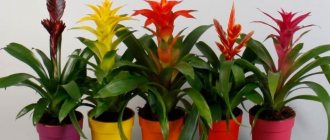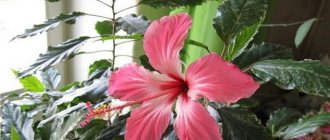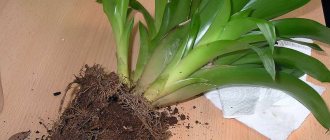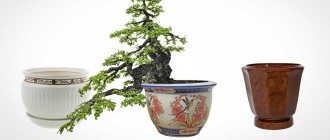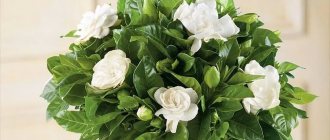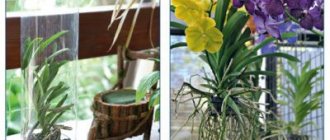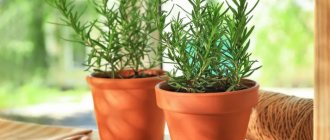Guzmania or Guzmania from the Bromeliaceae family (1) is one of the best indoor plants for creating a modern interior. And the ability to grow away from direct sunlight and not demanding wintering conditions make it even more attractive.
This tropical epiphytic plant grows naturally on exposed mountain slopes in Central America and Brazil. There are about 218 (2) species. The first description of the genus was made in 1802. At the same time, Guzmania received its name in honor of the Spanish botanist and pharmacist Anastasio Guzman.
The plant is very impressive. Even before flowering begins, it amazes with powerful narrow leaves collected in a rosette. Guzmania flowers are inconspicuous, but the bracts are very bright - it is for them that this miracle of nature is valued. Moreover, the peduncle lasts from 2 to 6 months a year. After flowering, the plant dies, but produces many lateral shoots.
In what cases is Guzmania transplant required?
In order for the plant to please the owner’s eye, it needs appropriate care. In particular, it is important to replant this plant in a timely and correct manner; this procedure is a responsible one.
By following all the rules of replanting, the ornamental bush will be preserved and will bloom for a long period.
After the guzmania is purchased at the store and brought home, it is recommended to replant it.
Consider that this flower only needs one transplant, after purchase. Most often, flower shops and florist companies sell flowering plants, so after about 6 months, the upper part of the flower will gradually dry out, and as a result the plant dies.
When guzmania is propagated, its children need to be transplanted into a separate flowerpot; children are formed as soon as the mother bush fades, this happens in the summer season.
Let's watch an interesting video about growing and transplanting guzmania:
Reproduction methods
How does guzmania reproduce? There are two ways: shoots and seeds.
Seeds
Tillandsia - home care after purchase, flowering and replanting
Propagation by seeds is more difficult than by shoots, but it is also possible, contrary to the opinion spread by some gardeners.
Seeds are sown on soil made of tree bark or peat and covered with film or glass. Do not sprinkle with soil; germination requires access to light. The soil is moistened with a spray bottle.
Seeds germinate quickly, after 2-3 weeks. Two-month-old sprouts can be transplanted into soil made from peat, leaf and turf soil.
Important! The seedlings are ventilated daily for half an hour.
By shoots
The easiest way to propagate an epiphyte. The faded plant produces children.
Often a novice gardener is concerned with the question of how to plant Guzmania and its cuttings? To do this, after the flowers fall, the children are simply separated from the dying mother plant. The length of the roots of the “baby” should reach one and a half cm.
Separation from the mother plant is carried out using a sharp, disinfected knife. The cut is immediately sprinkled with charcoal or covered with garden varnish.
The separated cuttings are transplanted into permanent soil under a bag or glass cover.
Thus, guzmania is a highly ornamental plant. It is also suitable for a novice gardener, since the rules for caring for it are simple. But it is worth remembering that after flowering, guzmania will always die; it is impossible to preserve it.
Choosing a pot and soil
The soil mixture in which guzmania will be grown must have a specific composition, this is due to the characteristics of the soil on which this flower grows in nature.
In its native lands, guzmania grows not on ordinary soil, but on old wood. When this plant is grown indoors, it is better to plant it in a ready-made substrate, sold in any flower shop. For Guzmania, a soil mixture intended for bromeliads is suitable.
The substrate for orchids is also excellent; it is sold in specialized stores. Experienced specialists involved in growing exotic flowers advise, after purchasing a ready-made soil mixture, to add pine needles and crushed charcoal to it, which improve the breathability and looseness of the substrate, making it as light as possible and suitable specifically for guzmania.
The soil mixture should be based on sphagnum moss, peat, finely ground tree bark and leaf soil.
This flower has shallow roots, therefore, the pot for growing it must be wide and shallow. High containers often lead to rotting of the soil mixture located at the bottom of the pot; the root system simply does not reach this soil. The best option is a flowerpot, the height of which is up to 12 cm; drainage material is poured onto the bottom of the pot, with a layer thickness of 2 to 3 cm.
Brief description of cultivation
Basic requirements for flower maintenance:
- lighting: diffused, high brightness;
- moderate watering: you need to navigate by the drying speed of the surface layer of soil;
- Temperature fluctuations are allowed, but within the limits: +15°…+27°С;
- air humidity is maintained at a high level;
- feeding frequency: monthly (once), special formulations are used, but the concentration of the solution should be half that recommended by the manufacturer.
When is the best time to transplant?
Guzmania is not picky about the time of replanting, but it is recommended to replant it in the same way as other indoor plants - in the spring, at which time the resulting children have a fully formed root system.
In autumn, only those bushes that are in special transport pots are replanted, since after purchase they will not have the opportunity to develop normally in this pot.
In all other cases, it is recommended to transplant in the spring.
How children are transplanted
Children must develop their own, independent root system, thanks to which young plants can take root successfully. It is recommended to replant daughter rosettes that have managed to grow to a height of 10 cm or more.
It is important to transplant the children into a loose and light substrate through which water easily passes. The soil should have an acidity level of 5.5 to 7. An excellent option is a soil mixture designed for orchids and palm trees. In addition, a soil mixture for bromeliads is suitable; experts recommend adding some pine needles and powdered charcoal to this soil, since the roots of young plants are not yet strong.
Approximately a third of the pot is filled with some kind of drainage material, 3-4 cm of substrate is poured over the drainage, on top of which a small mound is made of soil in the center, and the roots of the young bush, carefully separated from the mother flower, are placed on it.
The root system is very carefully straightened, the plant is planted in a pot and a small volume of soil mixture is added, shaking the pot a little to compact the soil.
Experts do not recommend compacting the soil mixture with your hands, because the young plant has a very fragile root system that can be easily damaged. When planting, it is important to ensure that the root collar is located at the level of the substrate.
Let's watch a video about transplanting Guzmania:
The soil
Guzmania is an epiphytic plant, so it requires loose, breathable soil . A substrate that contains equal parts of fibrous peat, turf soil, sand and sphagnum moss roots is ideal. The soil may also contain coniferous tree bark, crushed fern roots and charcoal. Many gardeners successfully grow guzmania using soil for orchids and ferns. Children take root especially well in such a substrate when planted.
Rules for caring for a newly planted plant
When the bush is watered for the first time, Kornevin is added to the water. Young plants are watered for the first time when the children are planted in a separate pot. It is important that the root system has time to breathe between watering the soil, so watering is carried out only when the soil mixture is dry on top.
Guzmania requires high air humidity in the room; to maintain high humidity, you can spray the plant with boiled water, which should not be cold.
Or you can place the bush in a tray, pour expanded clay into it and moisten it with water. It is important to keep it moist at all times. If the care is correct, this plant will bloom 2-3 years after planting.
Flower care will be correct if the following conditions are met:
- air humidity should be high enough;
- It is unacceptable to place guzmania next to heating appliances;
- It is better to place the flower in bright but diffused sunlight;
- The best option is in a warm room where there is no draft;
- The best location for the plant is a western or eastern window sill; you can place it in the depths of a warm loggia, which is located on the south side of the house.
Universal fertilizers are used as fertilizers, for example, Biopon, Stimovit, Agricol. Each of them is pre-dissolved in water, and the bush is fed with this solution. Fertilizers are applied 4 times less than the manufacturer recommends. Guzmania is fed once a month, from May to September.
Main types
In total, there are about 130 species of Guzmania, mostly epiphytes, but there are also terrestrial species. Not all of them can be grown as houseplants.
Guzmania mix
Guzmania reedulata
Latin name: Guzmania lingulata. The most commonly grown in the house representative of the Guzmaniev family.
In nature, Guzmania reed is an epiphyte, a relative of the pineapple. It grows on tree trunks, clinging to them with its roots. High in the mountains, this plant grows directly on the rocks. It receives nutrients through aerial roots. There is no stem, narrow dense leaves form a rosette emanating directly from the root.
This is interesting! In such a “basket” of leaves, rainwater accumulates and insects, birds and small animals drink from it.
Light, inconspicuous flowers are located at the top of the peduncle. They are surrounded by bright bracts. Many people think of them as petals, but they are simply modified leaves.
The reed variety has long, up to half a meter, bright green leaf plates, collected in a dense rosette. The bracts are scarlet, dark red, orange. The flowers themselves are pale yellow.
Guzmania reedulata
Guzmania mosaic
A large representative of the Bromeliad family with a rosette almost a meter in diameter. The leaves are variegated in color, with lighter stripes and specks. The bracts are a rich pink or orange hue. Only one peduncle is formed. Blooms from late winter until almost mid-summer.
Mosaic variety
Tricolor
The bracts and leaves are colored green, red and white. The flowers are yellow, three-petaled, low set in a leaf rosette.
Tricolor
Guzmania blood red
A small flower with a rosette up to 30 cm in diameter. During flowering, from mid-spring to late summer, almost all the foliage turns red, not just the bracts. Blood red Guzmania has species with purple and crimson bracts. The petals are cream colored.
Guzmania blood red
Ostara
A hybrid with a six-month flowering period, after which the mother plant dies, but numerous children remain. The bracts are red-orange. The foliage is glossy and dense. Named after the ancient Germanic goddess of spring.
Ostara
Donell-Smith's Guzmania
Inflorescence of complex shape. The bracts are red and yellow, sometimes white, the leaves are scaly.
Guzmania Donell-Smith
Guzmania mix
You can often see the name “Guzmania Mix” on price tags in stores. Beginning flower lovers need to understand that this is not a separate variety, but a mixture of seeds from several plant species.
Guzmania: what it brings to the house, superstitions and signs
Many people believe that guzmania brings a lot of good things into the home.
Here are some examples:
- Green foliage disinfects and purifies the air in the room.
- During the flowering period, it releases a substance that has bactericidal properties; this substance kills germs and bacteria.
- Some believe that the plant promotes a positive atmosphere in the home and harmony in the family.
- Has a positive effect on male strength.
- Attracts material well-being.
According to signs, gusmania enhances the shortcomings of the owners, especially if they have anger and greed. In people with allergies, the flower can cause exacerbation and excessive drowsiness.
Lighting
Guzmania is very demanding on lighting. In order for flowering to begin and continue in full force, the plant needs a large amount of bright, diffused light throughout the year. If the flower is on the south side of the house, then it needs to be slightly shaded. Direct sunlight will be destructive for the tropical guest. With short daylight hours, there may be no flowering at all.
The flower has dried up: what to do, is it possible and how to save it?
After the buds fade, the plant begins to lose its bright color and subsequently dries out. This is considered the norm characteristic of this plant. You should not start adding fertilizer or heavily watering the flower, this will not help save its life.
However, you can take care of the continuation of his family; for this, the following manipulations are performed:
- Cut off the flower stalk.
- Pour water into the tray, but not into the pot.
- Remove dried leaves that appear periodically.
- When the plant dries completely, children or daughter shoots should form, which are then transplanted into a separate pot.
It is impossible to save or revive the mother flower.
Possible problems
- Excessive watering may cause root rot .
- Guzmanias are often affected by fungal diseases due to being kept in too warm and humid rooms.
- Brown spots on the leaves indicate sunburn.
- The tips of the leaves turn brown when there is insufficient air humidity, as well as watering with hard water or the lack of the required amount of water in the outlet.
- The death of the plant after flowering is completed is a natural process.
- The appearance of yellow spots on the leaves with gradual yellowing and death of the leaf as a whole indicates a red spider mite infestation.
- The appearance of brown plaques-tubercles on the leaves - the plant is affected by bromeliad scale.
- If the leaves are covered with a white cotton wool-like fluff , it means that mealybugs have occurred.
- If the plant does not form daughter plants , it means it does not have enough nutrients.
- Drooping and soft leaves indicate a low temperature for keeping Guzmania.
Is it possible to grow guzmania in the garden?
Guzmania can be used not only for rooms, but also to decorate the summer garden.
The great advantage of the flower is the stickiness of its leaves, thanks to which they can quickly and easily cling to nearby objects or plants. For example, to a tree trunk, column, gazebo, fence. It can be grown in hanging condition.
All this will add zest to the decorative landscape and make the garden more attractive.
So, guzmania is a rather unpretentious flower that needs a one-time transplant. If you follow simple care tips, the plant will delight your whole family with its beauty!
Watering
Watering guzmania is carried out as the substrate dries. As soon as the top layer dries, the plant can be watered. It is important to pour water not only at the root, but also into the leaf rosette . In winter, watering becomes less frequent, in spring and summer months - more often. That is, the lower the temperature in the room, the less frequent the watering, and vice versa.
You need to be especially careful about the water for watering your guzmania. The fact is that the root system of this plant does not tolerate the effects of chlorine and lime. Only filtered . And if possible - distilled . It is important not to forget about daily spraying of leaves.

